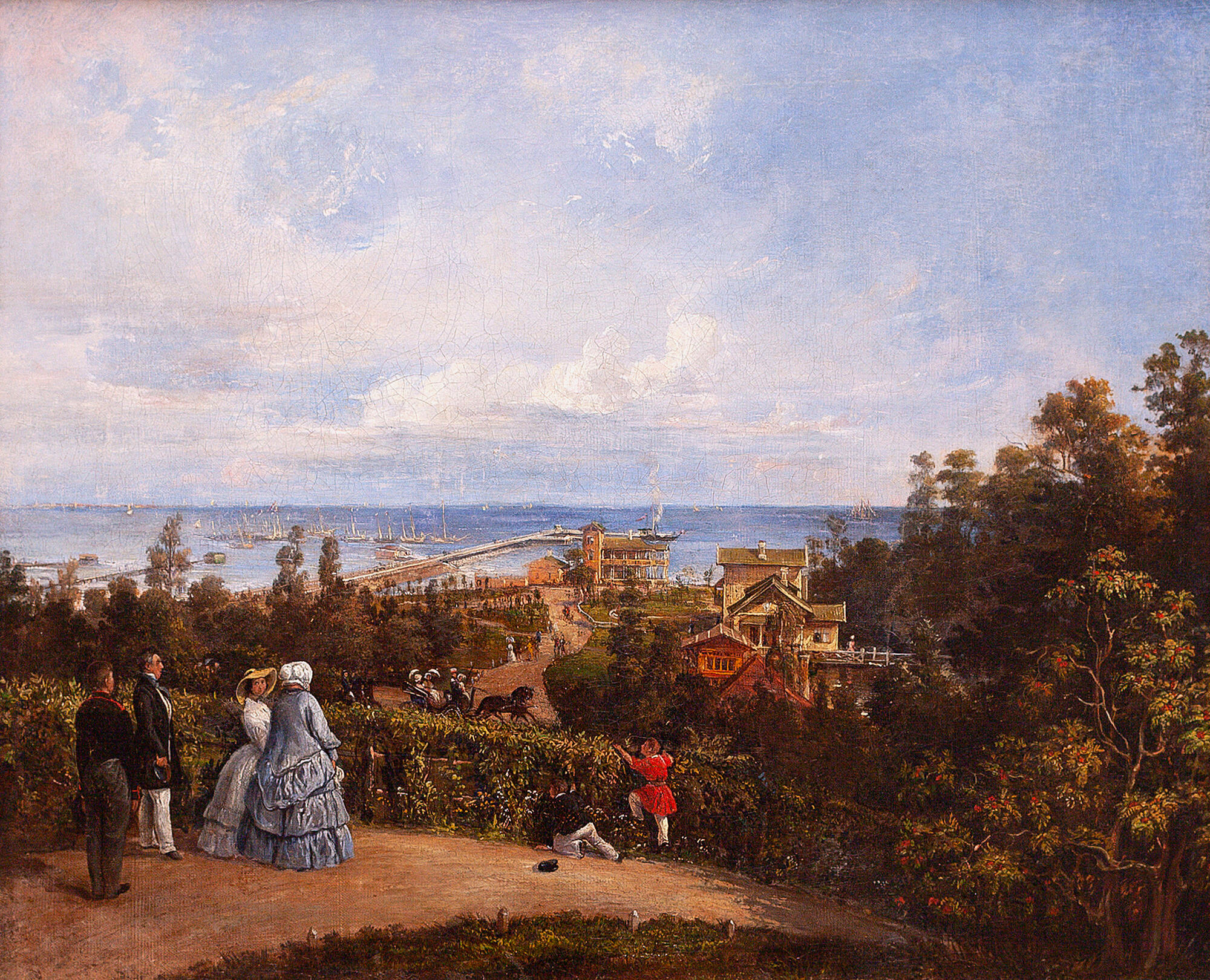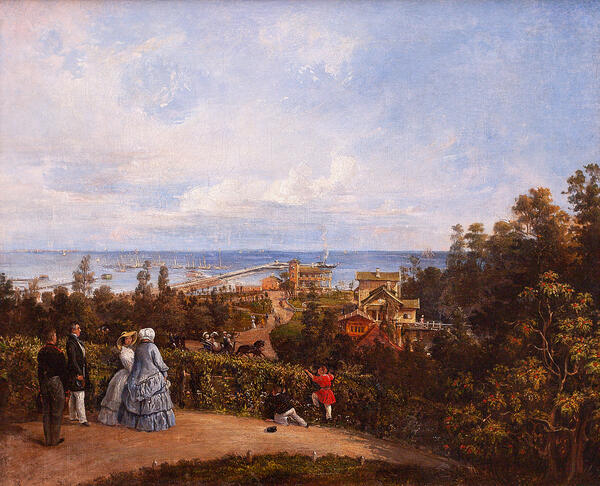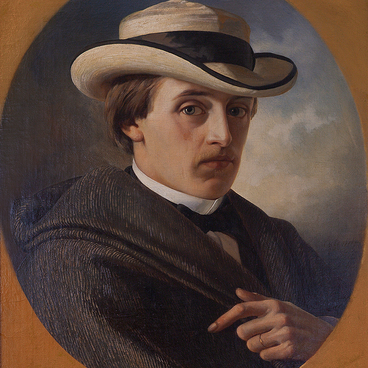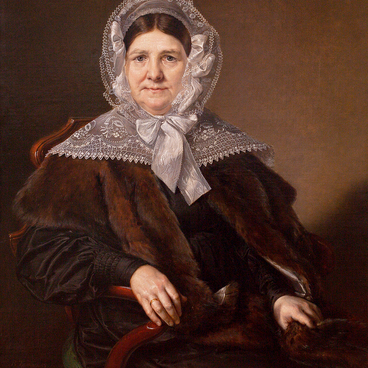The landscape displayed in the museum is painted in the classical tradition, which is characterized by a strict composition and a plethora of details. The site in the foreground acts as a stage, while the group of figures on the left and the trees on the right frame the painting, like theater flats. Figures and objects are turned towards the center, into the depth of the canvas. The lines of the pathways also emphasize this perspective.
The planes of the painting obey the landscape rule of three colors: yellow and brown should prevail on the first plane, green — on the second, blue and other cold shades — on the third. It enhances the sense of depth when looking at the canvas, as the farther away the objects are, the more tangible the air around them seems. A tall building on the shore and a pier stretching into the bay emphasize the center of the composition — it is highlighted by the brightest spot of color.
Classicists considered still life, landscape, portrait and scenes from everyday life as the so-called ‘low’ genres. It was deemed unacceptable to combine them with battle scenes or paintings on mythological and religious themes, to which a deeper meaning was attached.
At the same time, genres are still interconnected, for example, portrait and still life, landscape and genre painting. The landscape from the collection of the Tomsk Museum is animated by human figures, which create a plot. In the painting, the artist captured Emperor Nicholas I on his way to the residence ‘Alexandria’. This is indicated by a cavalcade of aides-de-camp galloping behind the carriage, as well as by the men without hats, who are drawn up in line, and curious boys who climb bushes, taking off their caps.
The accuracy of the details of the landscape suggests that the artist painted en plein air. The author depicted the territory of the Lower Park of Old Peterhof with the ‘Merchant Harbor’ pier as they looked in the period from the spring of 1850 to the spring of 1852. The Lower Park is part of the Peterhof Palace and Park complex. It is located between the Grand Peterhof Palace and the coast of the Gulf of Finland. Together with the Upper Garden it forms the oldest part of the complex. The buildings that the painter captured have not survived to our time.
The planes of the painting obey the landscape rule of three colors: yellow and brown should prevail on the first plane, green — on the second, blue and other cold shades — on the third. It enhances the sense of depth when looking at the canvas, as the farther away the objects are, the more tangible the air around them seems. A tall building on the shore and a pier stretching into the bay emphasize the center of the composition — it is highlighted by the brightest spot of color.
Classicists considered still life, landscape, portrait and scenes from everyday life as the so-called ‘low’ genres. It was deemed unacceptable to combine them with battle scenes or paintings on mythological and religious themes, to which a deeper meaning was attached.
At the same time, genres are still interconnected, for example, portrait and still life, landscape and genre painting. The landscape from the collection of the Tomsk Museum is animated by human figures, which create a plot. In the painting, the artist captured Emperor Nicholas I on his way to the residence ‘Alexandria’. This is indicated by a cavalcade of aides-de-camp galloping behind the carriage, as well as by the men without hats, who are drawn up in line, and curious boys who climb bushes, taking off their caps.
The accuracy of the details of the landscape suggests that the artist painted en plein air. The author depicted the territory of the Lower Park of Old Peterhof with the ‘Merchant Harbor’ pier as they looked in the period from the spring of 1850 to the spring of 1852. The Lower Park is part of the Peterhof Palace and Park complex. It is located between the Grand Peterhof Palace and the coast of the Gulf of Finland. Together with the Upper Garden it forms the oldest part of the complex. The buildings that the painter captured have not survived to our time.



